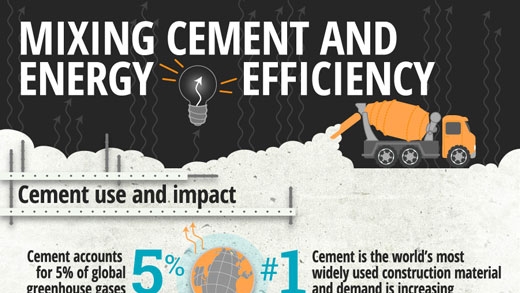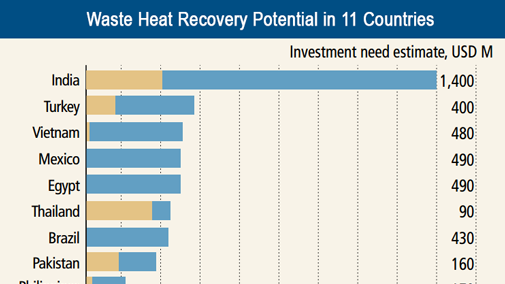Cement — the key ingredient of concrete — is the world’s most widely used building material. It’s also the product of an energy-intensive process that accounts for about 5% of global greenhouse gases. These emissions threaten to increase as developing countries urbanize and build roads, buildings, and other infrastructure in the decades ahead. To pursue a low carbon growth path, the industry needs to adopt the most efficient technologies including waste-heat recovery (WHR).
Waste-heat recovery involves capturing the excess heat of an industrial process and using it to generate electric power. The technology can be used in a number of heavy industries, including steel and chemicals, but has not been applied extensively outside of China despite its potential to increase energy efficiency and mitigate climate change. Of the more than 850 waste-heat recovery installations in the cement industry globally, China has 739, followed by India with 26 and Japan with 24.
A report by the World Bank Group’s private sector arm, International Finance Corporation (IFC), and the Institute for Industrial Productivity (IIP) says cement plants can supply up to 30% of their own electricity needs through the waste-heat recovery process and thereby improve their bottom line by up to 10-15%.
“Cement companies can get more reliable and cheaper energy and at the same time cut their greenhouse gas emissions,” says IFC Chief Industry Specialist Michel Folliet.
Exploring business opportunities in Asia and beyond
The report analyzes 11 country-markets in five regions where the cement industry is expected to grow. It estimates $5 billion in investment could introduce about 2 gigawatts (GW) of WHR technology in developing countries. To put that amount in perspective, 2 GW of electric power produced by WHR would be enough to power about 1.3 million to 1.5 million homes.


